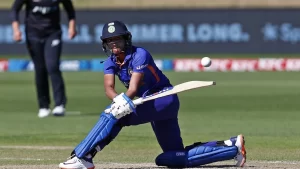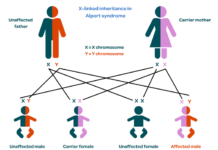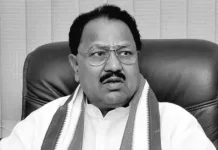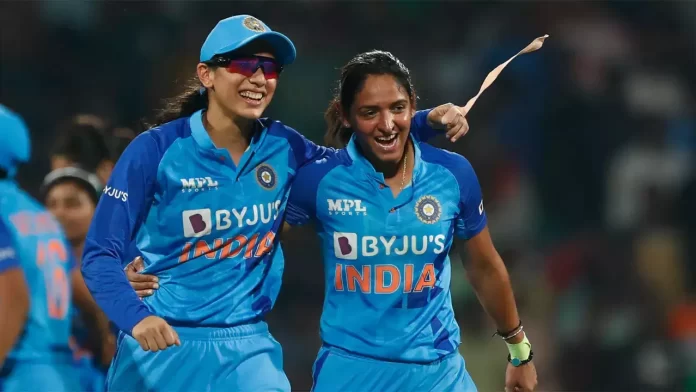The Women’s Premier League’s second season, which will be played in two different cities, will begin on Friday in Bangalore. Reality must also sink in for India’s Twenty20 International team once the initial hype subsides.
There is currently no bilateral cricket match scheduled for India until the end of August, with a significant gap following the WPL, according to the updated Future Tours’ Programme (FTP). Thus, this edition will probably be an important warm-up for the T20 World Cup in Bangladesh, which begins in September. This is true not only in terms of talent scouting but also in light of some of the team’s biggest stars’ underwhelming performances.
Including the T20 World Cup last year, India had been without a full-time coaching staff for more than a year. Just prior to a successful home season, Amol Muzumdar was named head coach, and several new players joined the squad.
However, the performances and combinations were generally ineffective. In nine white ball matches played at home against Australia and England, India won just two of them. In order to fill in the gaps in the team, Muzumdar and company will now be monitoring performances in the franchise league. Should the team’s veteran players continue to perform poorly, they may have to make some difficult decisions.
The captain must take charge.

Over the past 12 months, India’s batting order has not shown many signs of life, but Harmanpreet Kaur, the captain, is the most under suspicion.
Harmanpreet has scored just 146 runs in her last nine T20I innings since the World Cup of last year, striking at 107.35 with just one 50+ score. During that time, she has been dismissed five times for single-digit scores. She has also lost form in ODIs.
Fierce, occasionally surreal, events on the field have also demonstrated signs of agitation, and some of her captaincy decisions have also been questioned. Harmanpreet, the middle-order enforcer and captain of the Mumbai Indians, needs to use the WPL to break out of her slump. If this isn’t done, India might also experience some difficulties.
Shafali Verma, the opener for the Delhi Capitals, was dropped from the last two One-Day Internationals against Australia in December due to her inconsistent play since she first made the team as a teenager thanks to her aggressive batting style. She is still a key member of the T20 squad, though, particularly when she can chip in with a few overs as a spinner; a strong WPL campaign will help to cement that standing.
With 302 runs in 12 innings, Smriti Mandhana, the opener and captain of Royal Challengers Bangalore, has been India’s top run scorer for the past year. She has, however, found it difficult to convert starts, as evidenced by the one 50+ score she had during that run. She and Team India will be hoping that this will change during the tournament.
These three need to prove their mettle in the WPL if India is to have any chance of performing well at the World Cup.
The requirement for a finisher
In recent times, India have failed miserably to chase challenging totals or attempt to score big runs on good wickets because they lack power hitters in the lower-middle order. Australia’s average T20I scoring rate since the last World Cup is 8.39, while India’s average is 6.80 RPO. Although the three Twenty20 Internationals held in Bangladesh may have distorted the results, Australia, England, South Africa, and the West Indies have outperformed India during this time. Dot-ball frequency and boundary-hitting are major causes for concern.
In the majority of the six recent Twenty20 Internationals between India and Australia, Deepti Sharma was assigned to the finisher role. She has struck at a pitiful rate of 88.09 and has not only failed to record meaningful scores (84 runs in 8 innings since July), but she has also failed to produce any meaningful cameos. She amassed 90 runs at an 83.33 strike rate in 9 innings during the WPL last year.
Deepti’s place in the side is assured due to her fielding, consistency with the ball, and poise when needed in death overs. However, she is no longer a reliable batter, particularly as a finisher in T20s. This is a tournament where she needs to try to address that.
If India is hoping for a breakthrough performance this WPL, it would be the appearance of a strong finisher or power hitter. Due to an injury, Kanika Ahuja, who was selected for the Indian squads following her WPL performances in which she demonstrated strong striking ability, will not participate in this edition. When it comes to making big backend plays, India is in dire need of someone to complement Richa Ghosh. Anyone who can succeed in that area has a good chance of making the national team.
Combination of bowling
The emergence of talented spinners, the area of the squad where there has been some recent experimentation, has perhaps been a plus for India over the last three series.
Slow turners, similar to the Mirpur pitch where India played three ODIs and three T20Is in July of last year, are anticipated to be used for the World Cup.
Shreyanka Patil has become a mainstay, while Minnu Mani, Mannat Kashyap, and Saika Ishaque—a standout from last year’s WPL—all made their debuts recently. However, don’t forget to look out for some of the lesser-known figures, such as Sneh Rana, Radha Yadav, Ekta Bisht, and Poonam Yadav. If Radha plays regularly for Delhi, especially considering her better batting statistics during the domestic season, she might have a good argument.
Titas Sadhu has proven to be just as dependable as seamer Renuka Thakur, but India’s performance in Bangladesh is likely to depend more on its spin options.









































